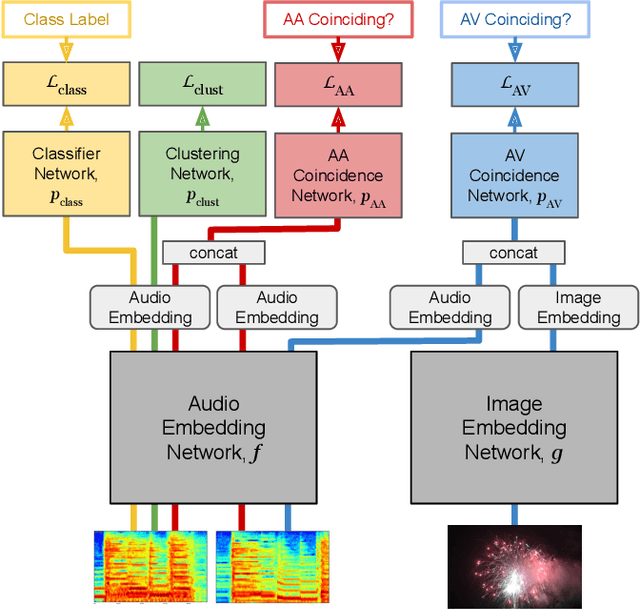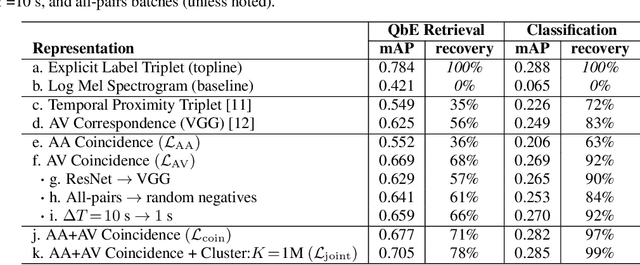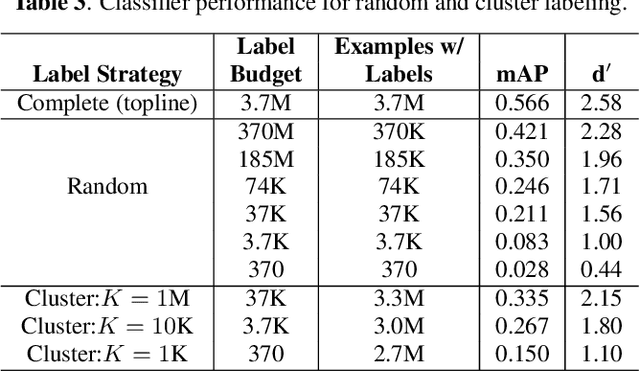Coincidence, Categorization, and Consolidation: Learning to Recognize Sounds with Minimal Supervision
Paper and Code
Nov 14, 2019



Humans do not acquire perceptual abilities in the way we train machines. While machine learning algorithms typically operate on large collections of randomly-chosen, explicitly-labeled examples, human acquisition relies more heavily on multimodal unsupervised learning (as infants) and active learning (as children). With this motivation, we present a learning framework for sound representation and recognition that combines (i) a self-supervised objective based on a general notion of unimodal and cross-modal coincidence, (ii) a clustering objective that reflects our need to impose categorical structure on our experiences, and (iii) a cluster-based active learning procedure that solicits targeted weak supervision to consolidate categories into relevant semantic classes. By training a combined sound embedding/clustering/classification network according to these criteria, we achieve a new state-of-the-art unsupervised audio representation and demonstrate up to a 20-fold reduction in the number of labels required to reach a desired classification performance.
 Add to Chrome
Add to Chrome Add to Firefox
Add to Firefox Add to Edge
Add to Edge